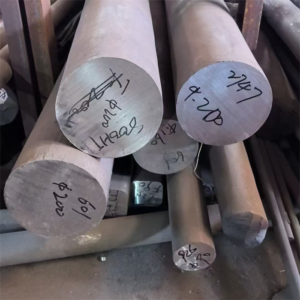Get in touch with us
Leave a message
Discover our premium nickel based alloys engineered for extreme environments where conventional metals fail. These nickel alloys, including Inconel, Monel, Incoloy, and Hastelloy, maintain their exceptional properties under intense thermal stress and aggressive chemical exposure. Our nickel superalloys deliver the strength, durability and performance that demanding industrial applications require, making them essential materials for aerospace, petrochemical processing, and marine engineering solutions.

Nickel Alloys trace their roots to the late 19th century when nickel’s durability sparked industrial curiosity. In 1905, Albert Marsh’s Nichrome—a nickel alloy blending nickel and chromium—kicked off the era of heat-resistant metals. The 1920s saw Haynes International unveil Hastelloy, a nickel-based Alloy tackling acid corrosion. Inconel and Monel followed in the mid-20th century for aerospace and marine needs. Today, nickel-based superalloys like Inconel 718 and Hastelloy C276 lead cutting-edge applications fueled by decades of metallurgical progress.
Nickel-based Alloys adhere to standards like ASTM B443 (Inconel 625) and ASTM B574 (Hastelloy C276), covering forms from bars to sheets. Grades are split by purpose: Monel 400 for saltwater, Incoloy 825 for acids, and nickel superalloys like Hastelloy X for heat. Classifications depend on nickel content and alloying elements, shaping nickel alloys into corrosion or strength specialists.
| Type | Key Composition | Characteristics | Common Grades |
|---|---|---|---|
| Monel | Ni (65-70%), Cu (20-30%) | Seawater corrosion resistance | Monel 400, K-500 |
| Inconel | Ni (50-70%), Cr (15-25%) | High-temp strength, oxidation | Inconel 625, 718 |
| Incoloy | Ni (30-45%), Fe (20-40%) | Acid resistance, thermal stability | Incoloy 825, 800 |
| Hastelloy | Ni (50-60%), Mo (15-30%) | Extreme corrosion resistance | Hastelloy C276, C22 |
| Property | Behavior | Key Elements | Notes |
|---|---|---|---|
| Corrosion Resistance | Excels in acids, saltwater | Ni, Mo, Cr | Hastelloy shines in HCl |
| Oxidation Resistance | Stable up to 982°C | Cr, Fe | Inconel for heat |
| Magnetism | Mostly non-magnetic | Ni dominance | Monel may vary |
| Heat Resistance | Reliable to 538-1200°C | Mo, Ni | Grade-specific |
| Material | Tensile Strength (MPa) | Hardness (HB) | Elongation (%) | Notes |
|---|---|---|---|---|
| Inconel 625 | 827 - 1034 | ≤ 290 | ≥ 30 | Beats SS in strength |
| Hastelloy C276 | 690 - 930 | ≤ 220 | ≥ 40 | Superior corrosion edge |
| 316 Stainless | 515 - 690 | ≤ 217 | ≥ 40 | Weaker in harsh settings |
| Titanium Gr 5 | 900 - 1000 | 334 | ≥ 10 | Strong, less ductile |
Nickel Based Alloys shines across industries:
Nickel Based Alloys thrive in extreme conditions.
Despite its strengths, Nickel Based Alloys isn’t flawless:
Nickel Based Alloys resist corrosion well:
Welding Nickel Based Alloy requires precision:
These steps preserve nickel alloy properties.




Professional manufacturer of premium specialty alloys, offering stainless steel, Hastelloy, nickel-based alloys and processing services. Delivering superior metallurgical solutions for aerospace, petrochemical, marine engineering and other demanding industries.
©2025 alloy-materials.com COPYRIGHT ALL RIGHT RESERVED.